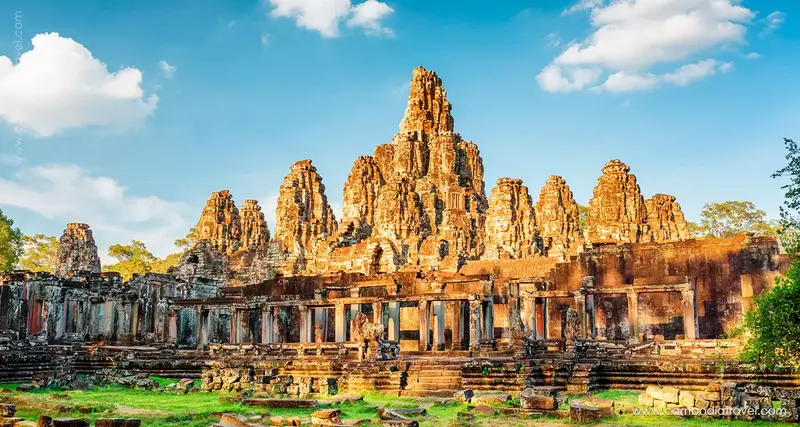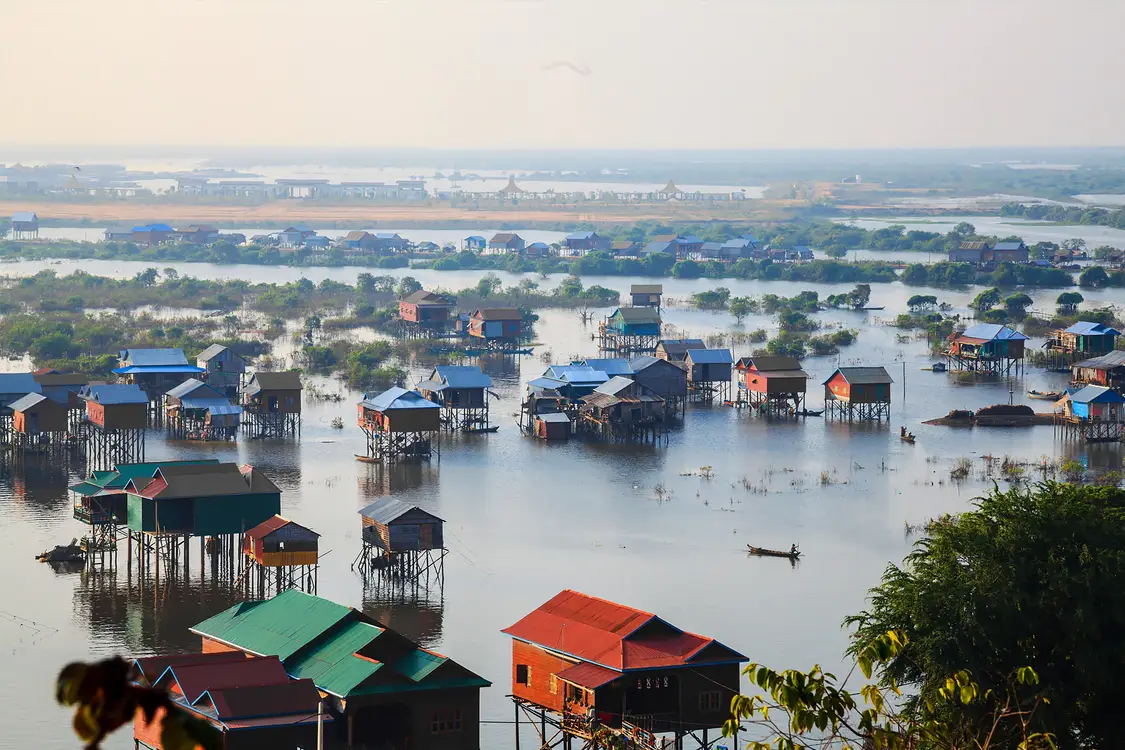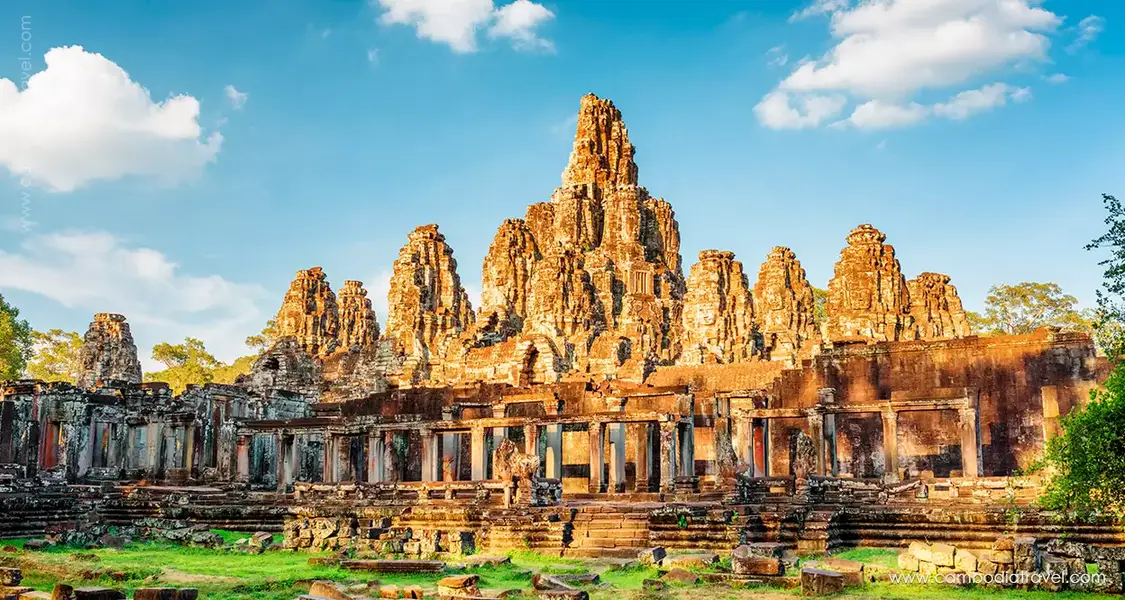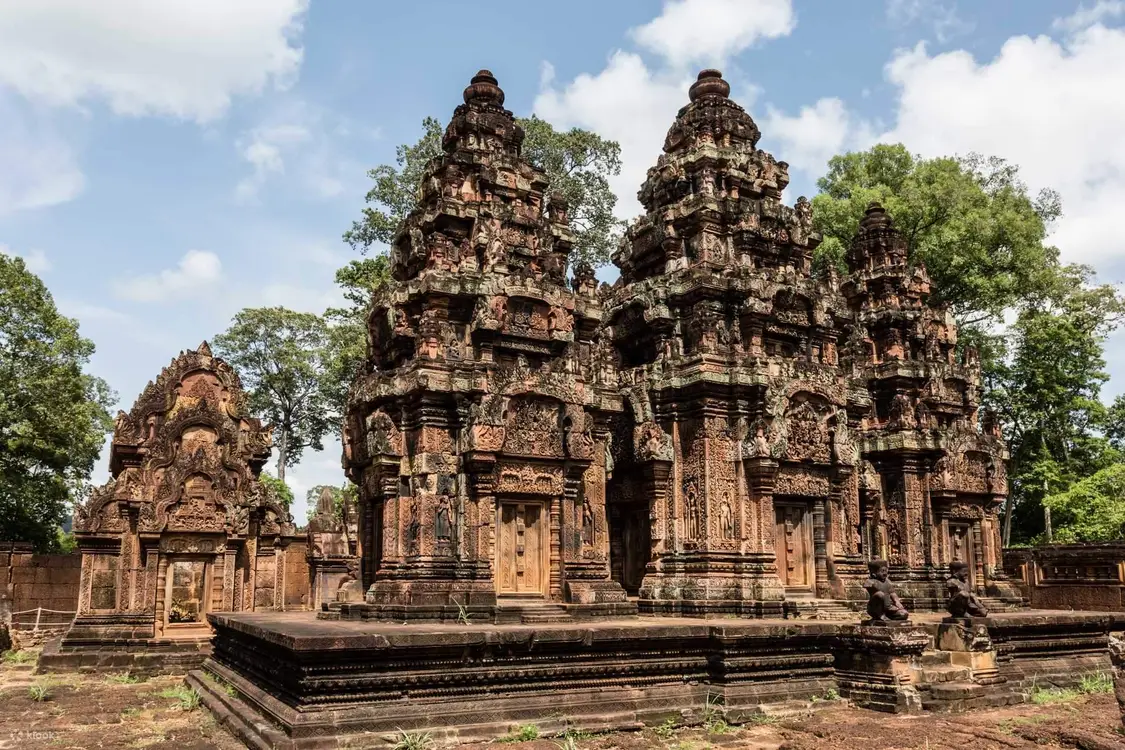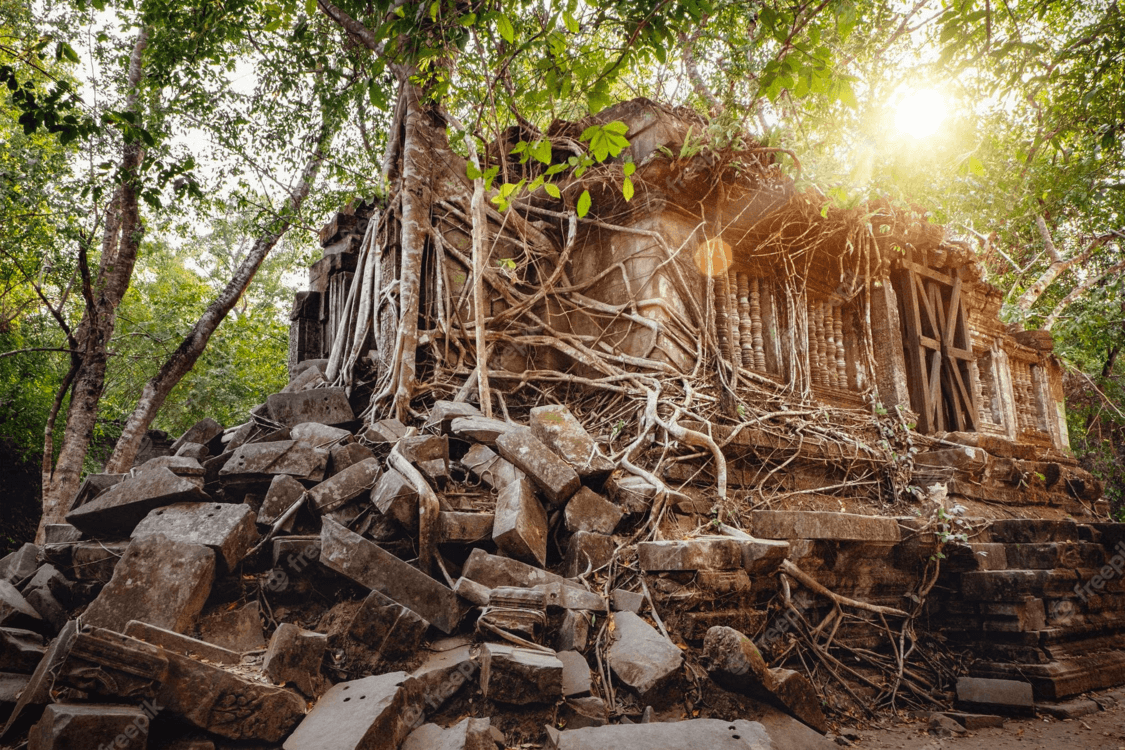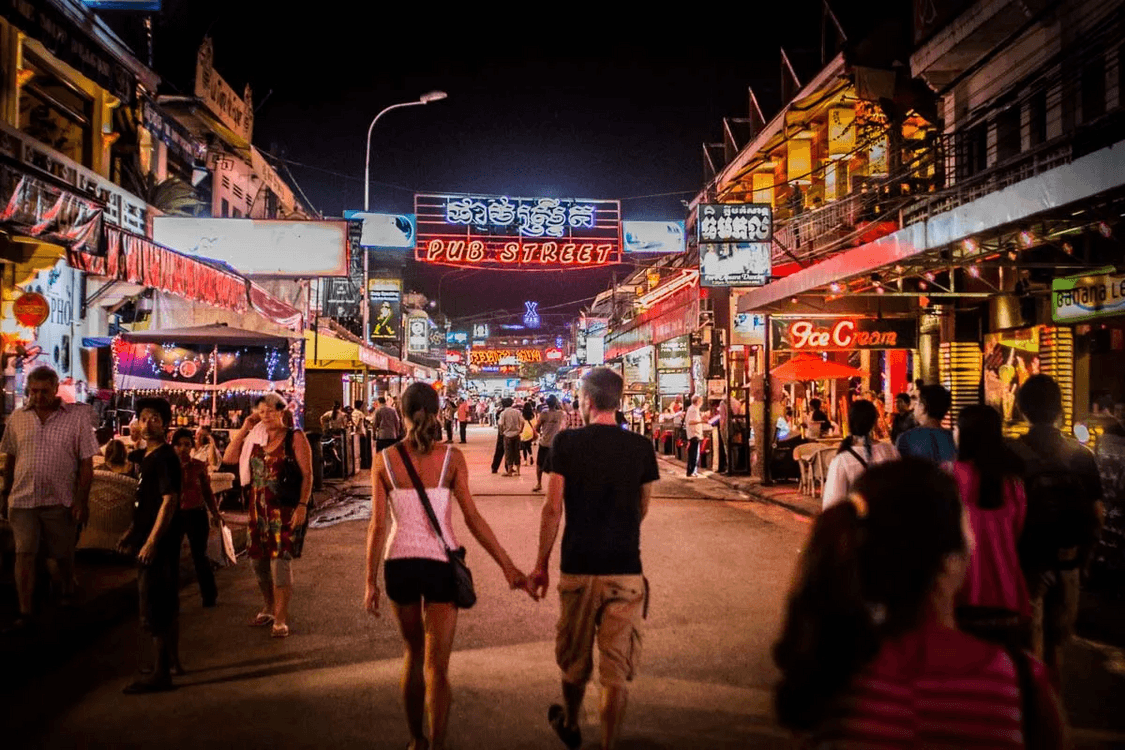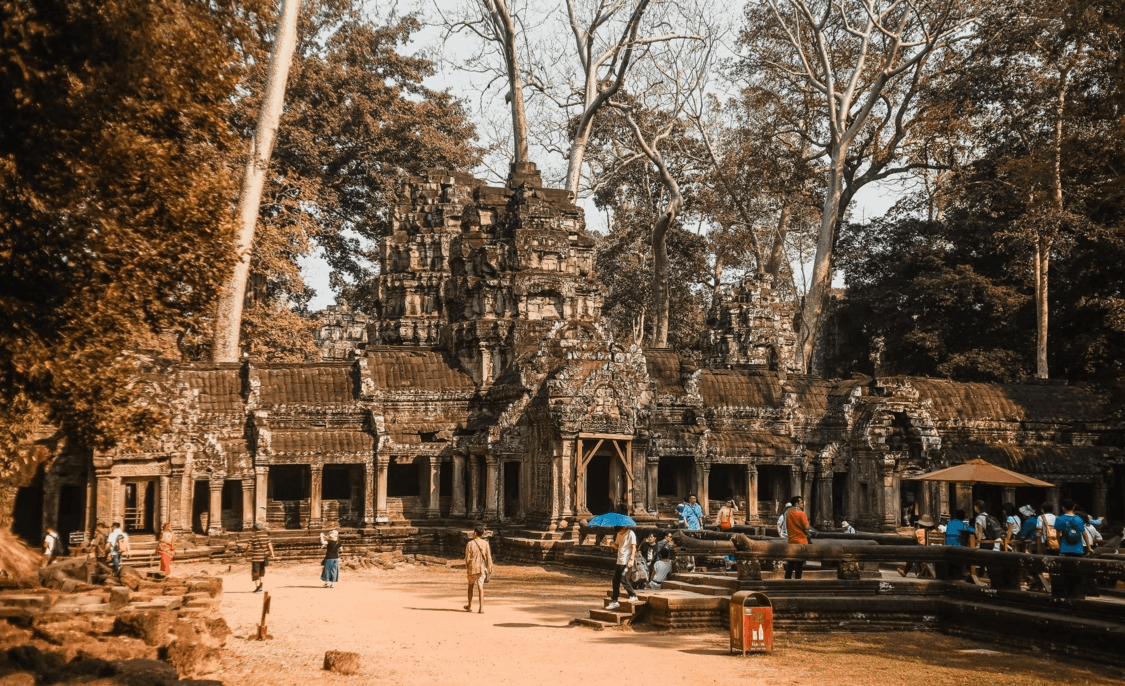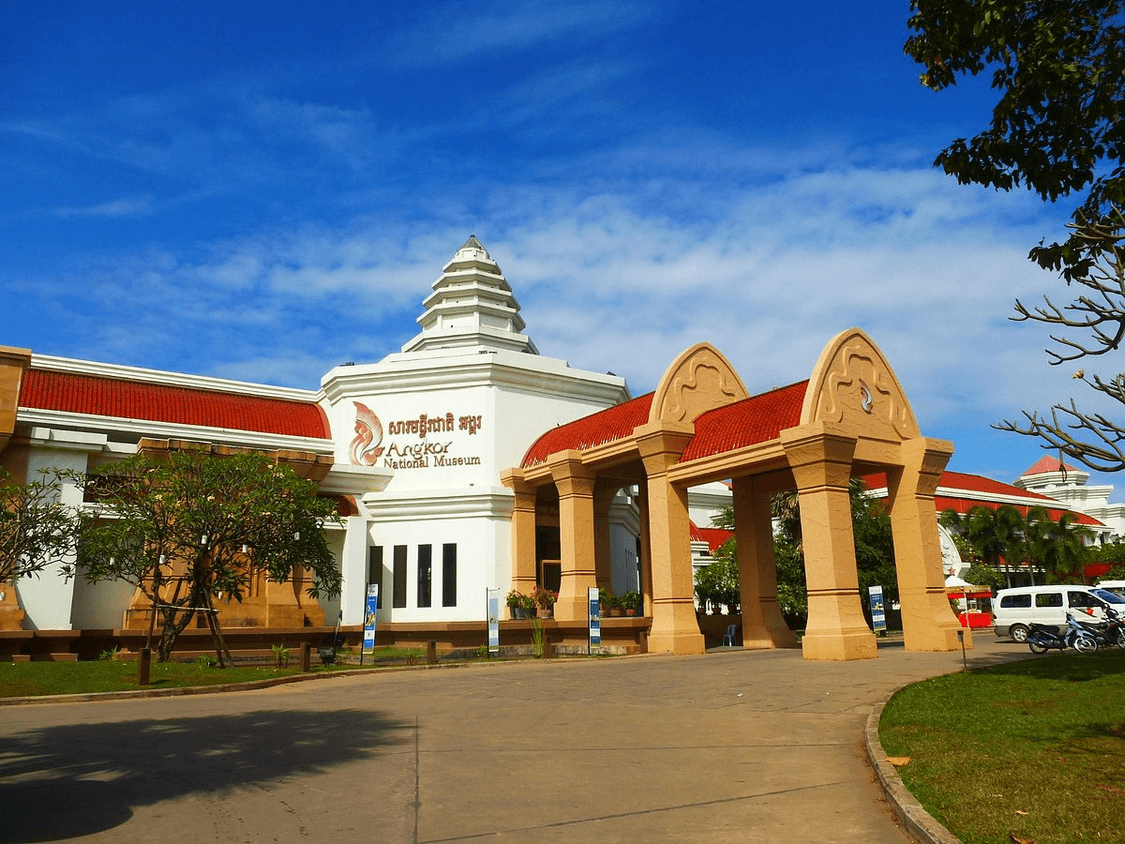Angkor Wat
Angkor Wat, acclaimed as the largest religious monument in the world and a great ancient wonder of the East. It is a collective term for the Angkor monuments, located north of Siem Reap city in Cambodia, about 6 kilometers from the city center. Angkor Wat is recognized as one of the four great ancient wonders of the East, and its unique architectural style and the design of Angkor Temple have even become a symbol on the Cambodian national flag.
Tonle Sap Lake
Take a boat tour of the Vietnamese floating village on Tonle Sap Lake and enjoy the beautiful scenery of the houses on the water. Tonle Sap Lake, also known as Phnom Penh Lake, is the largest freshwater lake in Southeast Asia and is connected to Phnom Penh through the Tonle Sap River and the Mekong River. Several floating villages are distributed on the lake, known as 'Vietnamese floating villages' because a large number of Vietnamese refugees have settled here. On a boat tour of the lake, you can admire the houses, churches, schools, and other buildings on the water, and experience a different sunset view from Angkor Wat, especially in the evening.
Bayon Temple
Visit the core area of Angkor Thom and explore its most important temple. Bayon Temple is the center of Angkor Thom and its most exquisite part. The temple was built in the late 12th century by King Jayavarman VII for himself. Here, visitors can not only admire the famous 'Smile of Angkor' but also immerse themselves in the rich and vivid bas-reliefs on the corridors.
Banteay Srei
Located about 21 kilometers northeast of Angkor Thom, near the Kulen Mountain, Banteay Srei is a uniquely styled and exquisitely beautiful structure among the Angkor monuments. It is renowned for its vibrant colors and intricate carvings, and is hailed as the 'Jewel of Angkor Art.'
Prasat Beng Mealea
Located within the Angkor archaeological park, Prasat Beng Mealea is one of the temples with a highly mysterious atmosphere. It is situated about 40 kilometers east of Angkor Wat and approximately 10 kilometers northeast of Banteay Srei, completely surrounded by wilderness. Here, you can witness the scene of Angkor Wat being forgotten in the jungle before it was discovered. Although Prasat Beng Mealea has now almost become a ruin, covered by dense jungle and unable to fully showcase its entirety, its unique appearance is still worth your time to explore in person.
Phnom Bakheng
Phnom Bakheng is the prime spot to enjoy the sunset over Angkor Wat. It is located northwest of Angkor Wat, about 1.5 kilometers outside the south gate of Angkor Thom. This small hill, approximately 65 meters high, is the highest point in the surrounding area, offering a panoramic view of the magnificent Angkor Wat. At the top of the hill stands Phnom Bakheng Temple, a sanctuary dedicated to the Hindu god Shiva. However, the most captivating aspect is the stunning sunset view from Phnom Bakheng. There are two ways to reach the top of Phnom Bakheng: by walking or by riding an elephant. Whichever way you choose, you will experience the charm of this enchanting location firsthand.
Pub Street Street 08
Next to the bustling and crowded old town of Siem Reap, a street near the old market is called 'Pub Street' by foreigners, becoming a place they linger. As the name suggests, there are many bars on this street, but unlike traditional bars, they also function as restaurants. During the day, you can enjoy delicious food at the street's restaurants, and at night, you can come to the bars for a drink and experience the unique nightlife of Siem Reap.
Ta Prohm Temple
Ta Prohm Temple, also known as 'Ta Prohm Temple', is located to the east of Angkor Wat and was built to commemorate the mother of Khmer King Jayavarman VII. This temple is also referred to as the 'Mother Temple'. Ta Prohm Temple was constructed using a large number of stone blocks and once served as a sanctuary for monks, priests, and dancers, functioning both as a temple and a monastery. However, over time, dense tropical trees gradually spread into the temple, with roots covering the entire structure like pythons, even penetrating the interior of the buildings. This led to the collapse of stone towers and walls, transforming the originally orderly architecture into a maze-like scene due to the intermingling of rubble and vegetation. This unique natural and cultural wonder also became the filming location for the movie 'Tomb Raider'.
Angkor National Museum
Angkor National Museum is a 10,000 square meter venue, with 5,000 square meters of exhibition halls showcasing art artifacts and paintings. These collections are representative works of art achievements from various periods of the Khmer Empire, and all are genuine. The museum's exterior design highlights the characteristics of macro borrowing and micro changes. From a distance, the museum's roof gives a sense of the ancient towers of Angkor Wat. However, upon closer inspection, you will find that details such as corridors, doorways, and window frames are not only inspired by the design of Angkor Wat but also incorporate modern elements, attracting many visitors to explore and study the rich heritage left by Khmer culture.
